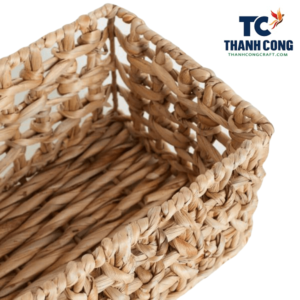Water Hyacinth Basket
A water hyacinth basket is a type of basket made from the fibers of the water hyacinth plant (Eichhornia crassipes). Water hyacinth is an aquatic plant known for its rapid growth and ability to form dense mats on the surface of water bodies. While it is considered an invasive species in some regions, it has found a useful purpose in the creation of handicrafts, including baskets.
https://www.linkedin.com/posts/thanh...82754304-rT08/
Here are some key points about water hyacinth baskets:
- Material: The primary material used in making these baskets is the dried and woven fibers of the water hyacinth plant. The fibers are strong and durable, making them suitable for crafting baskets of various sizes and shapes.
- Craftsmanship: Skilled artisans weave the water hyacinth fibers to create baskets with different patterns and designs. The weaving process can be intricate, resulting in a visually appealing and sturdy final product.
- Sustainability: Using water hyacinth for basket weaving can be considered environmentally friendly in some contexts. Harvesting and using this invasive plant for handicrafts help control its spread in water bodies and provide an alternative use for what would otherwise be considered a nuisance.
- Uses: Water hyacinth baskets can serve various purposes. They are often used for storage, both indoors and outdoors, and can be found in different shapes and sizes. Some baskets are designed for specific functions, such as laundry baskets, decorative storage, or plant holders.
- Aesthetics: The natural color and texture of water hyacinth give the baskets a rustic and organic look. The weaving patterns can vary, adding to the aesthetic appeal of the finished product.
- Maintenance: While water hyacinth baskets are durable, they may require some care to maintain their quality. Keeping them dry and away from prolonged exposure to moisture can help prevent mold or deterioration.
These baskets are popular in many parts of the world as sustainable and aesthetically pleasing alternatives to baskets made from traditional materials. They contribute to the recycling of an invasive species while providing livelihoods for artisans involved in their production.




 Trả lời kèm Trích dẫn
Trả lời kèm Trích dẫn